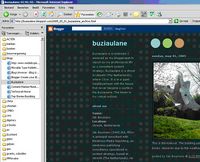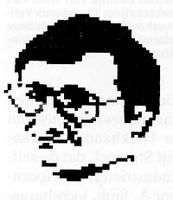In 2005 many companies celebrate their 10 years of existence online. Recently the daily Eindhovens Dagblad celebrated the 10 years existence of an online edition. On June 15th, one of the major IPs Planet Internet commemorated its launch. On July 1st, 2005 the Dutch quality newspaper NRC-Handelsblad was 10 years online.
No mention in the media is there, that on August 7th, 25 years ago, the first public service came online. On that date in 1980 the Dutch videotext service, named Viditel, was launched after two years of preparation. No one had any experience with setting up and selling an online service. Only a handful of progressive librarians had experience with searching scientific and technical information online.


Opening screen Viditel (1980) and the Internet home page of Buziaulane (2005)
The launch of the online service was the starting point for a complete new industry in the Netherlands and it took quite some time for it to blossom. The videotext period lasted from 1980 till January 1st, 1997, when the public service Videotex Nederland was unceremoniously dumped. Also other online services in that period, the so-called ASCII service never made any real impression in terms of business and turn-over.
When in 1985 the CD-ROM came onto the market, many people believed that online would be dead by 1990. But it did not. In fact CD-ROM and its spin-offs like CD-I and Electronic Book were frozen online multimedia carriers, which taught Dutch production companies multimedia and formed a perfect launching pad for Internet.
Internet in the Netherlands came into the main streams from the universities. While students at universities worked with e-mail and fast online, the first World Wide Web browser was being developed at CERN in Geneva (Switzerland). With Mosaic and Netscape as the first web browser, the first commercial ISPs started to show up in 1993. With the creation of the Digitale Stad (Digital City) in Amsterdam, the first online consumer service was created.
By now small band internet has grown into broadband, almost covering more than 50 per cent of the households in the Netherlands. This is opening new avenues like triple play: one telephone line for telephone, internet and television or cable for television, internet and telephone, both as an integrated offer. As such it will bring television programs and theme channels to the home, whenever the residents want it.
Besides fixed line internet, internet content can be picked up by mobile phone. And here also convergence starts: music and movies can be downloaded, but also television programs.
In 25 years online in the Netherlands has grown into a content and digital services industry, mainly due to internet. And in the meantime it has gone through the rise and fall scenario during the dot.com crash from 2000 till 2003. After the hype and the backlash, the way up has set in again.
Read how online in the Netherlands grew: about the ventures and the failures; the optimism and the realism. Read tomorrow about the starting environment for online in the Netherlands.


Jak Boumans, a videotex representation in the magazine Boekblad (1981) and a photograph on Internet (2004)

No comments:
Post a Comment